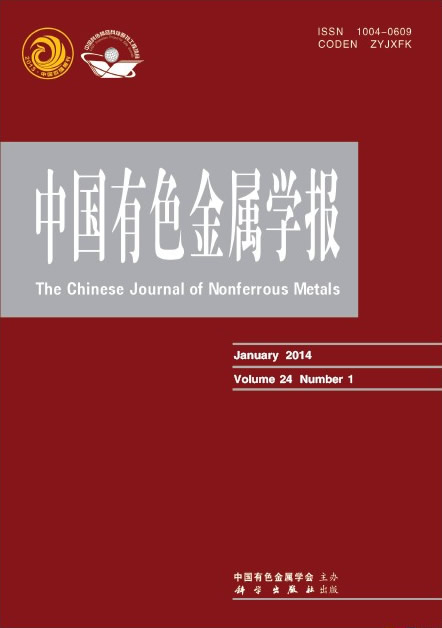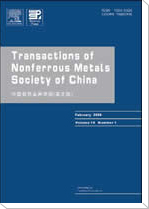(西安理工大学 材料科学与工程学院,西安 710048)
摘 要: 采用座滴法研究在真空和Ar气气氛下,Cu-Fe合金在W基板上的润湿行为和Fe元素对Cu/W界面结合状态的影响。借助SEM、EMPA和XRD分析添加Fe元素对Cu/W界面微观结构和界面结合机制的影响。结果表明:添加Fe有利于降低Cu/W间的接触角;且其润湿角随温度升高而降低。与在真空条件下相比,在Ar气气氛中,添加Fe能较大幅度地减小Cu/W间的接触角,当Fe的添加量为1.2%(质量分数)时,在1 300 ℃接触角由107.5˚下降到47.5˚;Cu/W界面形成1~2 μm的合金过渡层,平直的Cu/W界面变成锯齿状,且随着升高温度,界面处Cu、Fe和W元素间的扩散与溶解程度加强,Fe原子充分地扩散到界面两侧的Cu和W中,界面附近没有新相生成;Cu/W界面结合机制由最初的机械结合转变为扩散与溶解型的冶金结合。
关键字: 座滴法;润湿性;接触角;Fe;Cu/W界面
(School of Materials Science and Engineering, Xi’an University of Technology, Xi’an 710048, China)
Abstract:By the sessile drop technique, the wetting behaviors of Cu-Fe alloys on W matrixes in the vacuum and Ar atmosphere, and the effect of Fe addition on the bonding conditions of Cu/W interface were studied respectively. SEM, EPMA and X-ray diffraction were used to analyze the microstructure and bonding mechanism of the Cu/W interface with the addition of Fe element. The results show that the wetting angle of Cu on W substrates decreases with increasing content of Fe in liquid Cu, and the wetting angle also decreases with increasing wetting temperature. Compared with the experimental results in the vacuum, the wetting angle decreases dramatically with increasing content of Fe in Ar atmosphere, and the contact angle between molten Cu and W substrate decreases from 107.5˚ to 47.5˚ while the content of Fe is up to 1.2% (mass fraction) at 1 300 ℃. There is an alloying transition layer with a thickness 1−2 μm at the Cu/W interface, and the straight interface of Cu/W system is turned into serrate interface. With increasing wetting temperature, the mutual diffusion and dissolution of Cu, Fe, and W atoms are much more intense, the Fe atoms are diffused and dissolved into the W and Cu matrixes, and there is no new reactive phase on the CuFe/W interface. The bonding mechanism of Cu/W interface is transformed from the initial mechanical bond into the metallurgical bond by means of mutual diffusion and dissolution.
Key words: sessile drop technique; wettability; contact angles; Fe; Cu/W interface


